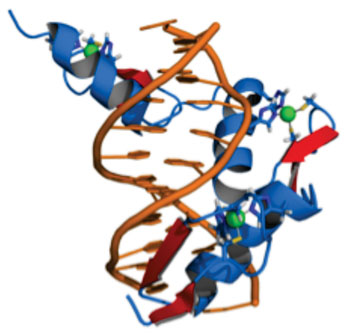Molecular Sensors Generated by Synthetic Biology Technique Using Intein-Based Protein Splicing
By LabMedica International staff writers
Posted on 06 Oct 2015
Biotech researchers have used intein-based protein splicing to generate synthetic protein components that are able to detect specific DNA sequences and subsequently trigger a desired intracellular response such as activation of a gene or initiation of a molecular pathway.Posted on 06 Oct 2015
An intein is a segment of a protein that is able to excise itself and join the remaining portions (the exteins) with a peptide bond in a process termed protein splicing. Intein-mediated protein splicing occurs after the intein-containing mRNA has been translated into a protein. This precursor protein contains three segments — an N-extein followed by the intein followed by a C-extein. After splicing has taken place, the resulting protein contains the N-extein linked to the C-extein; this splicing product is also termed an extein. Pharmaceutical inhibition of intein excision may be a useful tool for drug development; the protein that contains the intein will not carry out its normal function if the intein does not excise, since its structure will be disrupted.

Image: representation of a protein (blue), which contains three zinc fingers in complex with DNA (orange). The coordinating amino acid residues and zinc ions (green) are highlighted (Photo courtesy of Wikimedia Commons).
Investigators at the Massachusetts Institute of Technology (Cambridge, USA) exploited the programmability of zinc-finger DNA recognition to drive the intein-mediated splicing of an artificial trans-activator that signaled to a genetic circuit containing a given reporter or response gene. The zinc finger proteins (each containing a separate intein) were engineered to recognize adjacent DNA sequences within the targeted gene. Thus, when the sequences were aligned, the inteins meshed and were excised, allowing the extein halves to rejoin and form a functional protein.
In the September 21, 2015, online edition of the journal Nature Methods the investigators described the use of these protein sensors to mediate sequence recognition-induced apoptosis as well as to detect and report a viral infection.
This approach established a synthetic biology framework for endowing mammalian cells with sentinel capabilities, which provided a programmable means to detect and remove infected cells. It may also be used to identify positively transduced or transfected cells, isolate recipients of intentional genomic edits, and increase the repertoire of inducible parts in synthetic biology.
“There is a range of applications for which this could be important,” said senior author Dr. James Collins, professor of medical engineering and science at the Massachusetts Institute of Technology. “This allows you to readily design constructs that enable a programmed cell to both detect DNA and act on that detection, with a report system and/or a respond system.”
Related Links:
Massachusetts Institute of Technology













